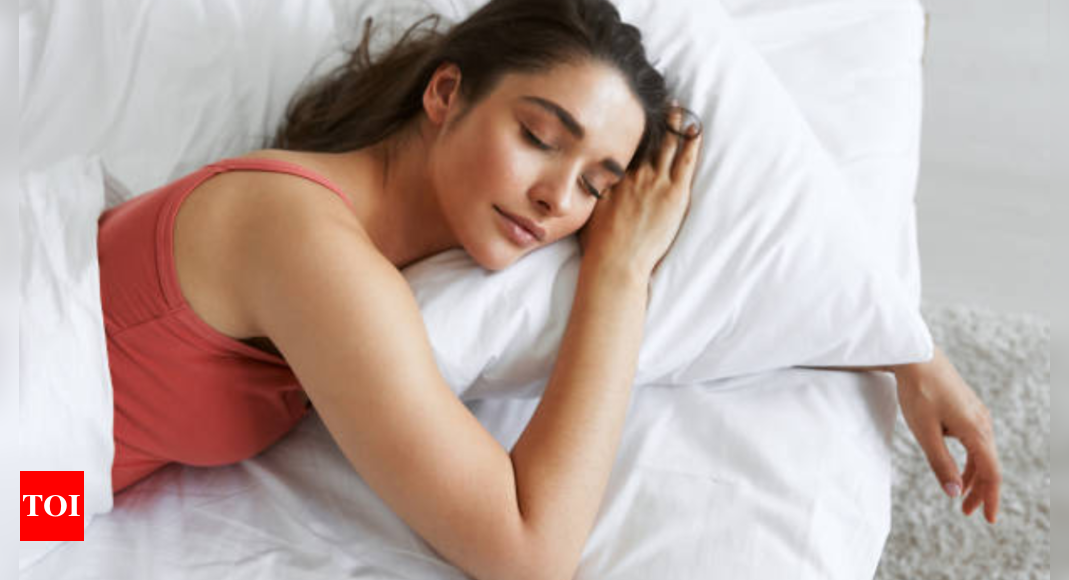Naturopathic ways to get a good night’s sleep
Let’s discover some natural therapy Practices to ensure a rejuvenating night’s rest:
Choose an early light dinner: To promote optimal sleep, experts recommend eating dinner at least 2 to 3 hours before bedtime and choosing foods that are easy to digest. Eating a heavy meal too close to bedtime can negatively impact sleep quality and interfere with digestion.
Natural sleep aids: something like herbs Brahmi and Shankhapushpa It is known for its therapeutic properties in combating insomnia and sleep disorders. These botanical remedies are often used in the comprehensive treatment of sleep disorders.According to research, these herbs It has a sedative effect and promotes restful sleep by regulating stress hormones.
massage therapy: Massage therapy is recognized as a way to reduce stress, release tension built up during the day, and promote relaxation. Promote blood circulation and reduce body pain for a restful night’s sleep. Additionally, massage has the potential to unblock and release negative energy, contributing to overall comfort. Its calming effects on both body and mind make it easier to relax and fall asleep, especially when administered late in the evening.
acupuncture: Acupuncture, a technique that involves inserting tiny needles into specific points in the body, has been proven to be effective in reducing stress, depression, pain, and insomnia. Widely recognized as one of the safest ways to treat insomnia, acupuncture has shown promising results in clinical studies.
In a small study conducted in 2017, researchers compared traditional acupuncture to sham acupuncture (the needles are not inserted too deeply) in 72 people with primary insomnia. Participants received treatment three times a week for four weeks.
The results revealed that traditional acupuncture was more effective in improving insomnia symptoms, sleep efficiency, and total sleep time during the treatment period. Additionally, reductions in sleep arousal and self-reported anxiety were observed 2 weeks and 4 weeks after treatment, highlighting the sustained benefits of acupuncture.
yoga for better sleep
For those looking to improve their sleep quality, incorporating a calming yoga session before bed can be a valuable opportunity to release mental and physical tension. This habit is especially beneficial for people who are light sleepers, suffer from insomnia, or have limited rest time.
Here are some yoga poses that will improve your sleep quality.
Savasana or Corpse Pose: Savasana has a relaxing effect on our nervous system. It slows down the heart and breathing rate and lowers blood pressure. It is effective in controlling anxiety and stress and improves sleep quality. To practice savasana, lie upright on your back. Spread your legs slightly apart and place your hands slightly away from your body, palms facing up. Close your eyes and try not to think about anything. Focus on your breathing and relax in this position for a while.
Cancer can be cured if detected early: Signs to look out for
Anuloma viloma or alternate nostril breathing: Anuloma viloma, also known as alternate nostril breathing, is revered for its ability to balance the nervous system and reduce mental tension, insomnia, and high blood pressure. To practice this technique, you need to sit upright in a comfortable meditative position and practice Nasika His mudra with your right hand. Next, gently close the right nostril with your thumb and slowly inhale through the left nostril. After a complete inhalation, you must hold your breath for a while before closing the left nostril with your ring finger and simultaneously releasing your thumb from the right nostril. Breathe out slowly through your right nostril. Once you have exhaled, breathe in through your right nostril and hold your breath for a moment. Next, close your right nostril with your thumb, remove your ring finger from your left nostril, and slowly exhale. Practice 10 rounds.
Bhramari or Humming Bee Breath: Bhramari, also known as humming bee breath, has a calming effect. It reduces the activity of the sympathetic nervous system and increases the activity of the parasympathetic and vagus nerves, which not only relieves stress but also improves the quality of your sleep. To practice this pranayama, sit upright in a comfortable meditation position. Close your eyes and press your earlobe with your thumb. Place your index finger on your forehead and use your other finger to press lightly on the sides of your eyes and nostrils. Focus on the center of the eyebrow. Please keep your mouth closed. Inhale deeply, and as you exhale, make a soft humming sound from your throat and nose, and feel the vibrations in your brain. Practice 5 rounds.
Conclusion:
Regularly practicing natural remedies and yoga techniques plays a vital role in improving sleep and reducing sleep disorders. It is important to remain consistent in these efforts. Within three months of practicing diligently, you can expect noticeable improvements in your sleep quality, daytime energy levels, and overall performance.
(Authors: Dr. Babina, Chief Medical Officer and Mr. Rajeev Rajesh, Chief Yoga Officer, Jindal Nature Cure Institute)

